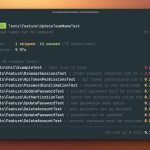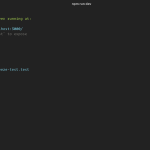大家好,今天给大家介绍下Laravel框架的Pipeline。
它是一个非常好用的组件,能够使代码的结构非常清晰。 Laravel的中间件机制便是基于它来实现的。通过Pipeline,可以轻松实现APO编程。
它是一个非常好用的组件,能够使代码的结构非常清晰。 Laravel的中间件机制便是基于它来实现的。通过Pipeline,可以轻松实现APO编程。
官方GIT地址
https://github.com/illuminate/pipeline
下面的代码是我实现的一个简化版本:
class Pipeline
{
/**
* The method to call on each pipe
* @var string
*/
protected $method = 'handle';
/**
* The object being passed throw the pipeline
* @var mixed
*/
protected $passable;
/**
* The array of class pipes
* @var array
*/
protected $pipes = [];
/**
* Set the object being sent through the pipeline
*
* @param $passable
* @return $this
*/
public function send($passable)
{
$this->passable = $passable;
return $this;
}
/**
* Set the method to call on the pipes
* @param array $pipes
* @return $this
*/
public function through($pipes)
{
$this->pipes = $pipes;
return $this;
}
/**
* @param \Closure $destination
* @return mixed
*/
public function then(\Closure $destination)
{
$pipeline = array_reduce(array_reverse($this->pipes), $this->getSlice(), $destination);
return $pipeline($this->passable);
}
/**
* Get a Closure that represents a slice of the application onion
* @return \Closure
*/
protected function getSlice()
{
return function($stack, $pipe){
return function ($request) use ($stack, $pipe) {
return $pipe::{$this->method}($request, $stack);
};
};
}
}
此类主要逻辑就在于then和getSlice方法。通过array_reduce,生成一个接受一个参数的匿名函数,然后执行调用。
简单使用示例
class ALogic
{
public static function handle($data, \Clourse $next)
{
print "开始 A 逻辑";
$ret = $next($data);
print "结束 A 逻辑";
return $ret;
}
}
class BLogic
{
public static function handle($data, \Clourse $next)
{
print "开始 B 逻辑";
$ret = $next($data);
print "结束 B 逻辑";
return $ret;
}
}
class CLogic
{
public static function handle($data, \Clourse $next)
{
print "开始 C 逻辑";
$ret = $next($data);
print "结束 C 逻辑";
return $ret;
}
}
$pipes = [
ALogic::class,
BLogic::class,
CLogic::class
];
$data = "any things";
(new Pipeline())->send($data)->through($pipes)->then(function($data){ print $data;});
运行结果:
"开始 A 逻辑"
"开始 B 逻辑"
"开始 C 逻辑"
"any things"
"结束 C 逻辑"
"结束 B 逻辑"
"结束 A 逻辑"
AOP示例
AOP 的优点就在于动态的添加功能,而不对其它层次产生影响,可以非常方便的添加或者删除功能。
class IpCheck
{
public static function handle($data, \Clourse $next)
{
if ("IP invalid") { // IP 不合法
throw Exception("ip invalid");
}
return $next($data);
}
}
class StatusManage
{
public static function handle($data, \Clourse $next)
{
// exec 可以执行初始化状态的操作
$ret = $next($data)
// exec 可以执行保存状态信息的操作
return $ret;
}
}
$pipes = [
IpCheck::class,
StatusManage::class,
];
(new Pipeline())->send($data)->through($pipes)->then(function($data){ "执行其它逻辑";});
相关推荐
最后更新于 2022年6月26日
相关博文
Laravel Pipeline解读







